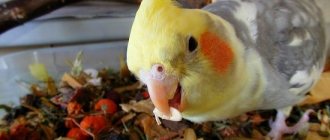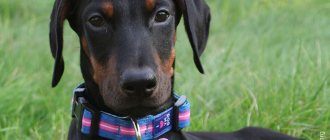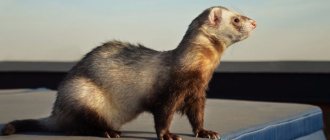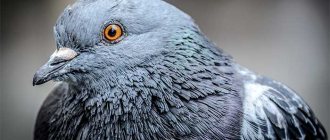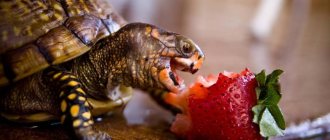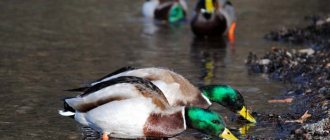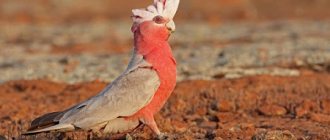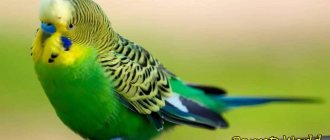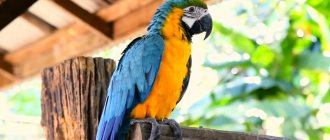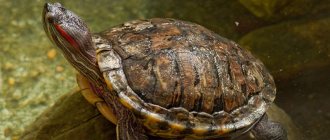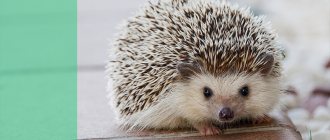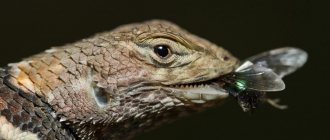Home » Articles about pigeons » What is the best way to feed pigeons?
The diet of pigeons largely depends on their habitat, and if we talk about pedigree birds, then also on the purpose of breeding. Dreaming of having his own dovecote, the future breeder should study the physiology of birds at different periods of life, as well as familiarize himself with information about the best way to feed pigeons.
What do pigeons eat in the wild?
Street birds obtain their own food.
As a rule, the components of their diet are:
- plants' seeds;
- cereals (rice, buckwheat, barley, millet);
- greenery;
- insects.
Pigeons often settle in large cities, where it is quite difficult for them to find food. During the autumn and summer periods, birds can still feed on grass, seeds and grains of various plants.
However, in cities, flowers and grasses are often cut down, so birds do not receive enough of this food. In addition, they spend a lot of time mining it. Meanwhile, in winter things are even more complicated, since at this time of year many sources of food are completely hidden under a layer of snow.
What do pigeons eat when they don’t have access to seeds, greens and other natural food? In this case, they settle in places where people feed them.
So, in their diet appear in large quantities:
- bakery products;
- sunflower seeds;
- food waste near trash cans.
However, this is the wrong diet for birds. Although pigeons eat seeds, bread crumbs and even waste with great appetite, they harm themselves because such food is poorly digested in their stomach, which is due to the peculiarities of the enzyme content and the rate of processing of food particles.
An unbalanced diet leads to a reduction in the average life expectancy of street pigeons by 3 times: their biological age is 13-15 years, but on the street they rarely live longer than 6 years, since they die from pathologies of the gastrointestinal tract.
Habitats
Almost everywhere, except, of course
Antarctica and the polar pole. Interestingly, there were times when the number of pigeons on our planet reached 5 billion individuals, although most of them died out due to deforestation in North America.
The largest variety of different species of pigeons is present in South America and Australia, where these birds live in tropical rainforests. And species such as the rock pigeon (which is what we most often see on the streets of our cities) live over a very wide geographical range.
What to give to street pigeons?
Many city residents like to feed pigeons. In addition, they willingly eat almost everything they receive from humans. In order not to harm these birds, you need to at least approximately understand the basic principles of their nutrition.
So, the following should be taken into account:
- Pigeons have a fairly small stomach volume, so they need to be fed often, but in small portions;
- so that the birds are able to quickly digest the food they eat, they should not be overfed or force-fed;
- birds should be given food that they can independently grind with their beaks, since they can choke if they swallow solid food;
- If possible, birds should be given a variety of vitamin and mineral complexes that will help balance their “outdoor” diet.
Given these rules, it becomes clear that pigeons should not be given scraps from the human table.
They should be fed with the following food:
- cereals, such as barley;
- cereals;
- beans;
- yeast;
- unroasted seeds.
Ideally, pigeons should be given special food from a pet store that contains all the microelements necessary for birds.
Natural enemies
You cannot envy pigeons, since they have quite a lot of natural enemies. Pigeons are hunted by feathered predators such as falcons, marsh harriers, kites and others. They attack these birds right in the air. On the ground, surprises await these birds, in the form of martens, ferrets, cats and even rats.
Almost wherever pigeons live, all predators are not against feasting on pigeons. When keeping pigeons at home, you need to make sure that no predator in the form of a ferret or the most common rat gets to the pigeons. These rodents pose a serious danger to newly born chicks.
Feeding poultry
The diet of domestic pigeons is often varied, as it consists of various crops:
| Culture | Representatives |
| Cereals | wheat |
| corn | |
| barley | |
| millet | |
| oats | |
| rice | |
| buckwheat | |
| Cereal legumes | peas |
| Vika | |
| lentils | |
| beans | |
| beans | |
| Oilseeds | sunflower |
| hemp | |
| flax | |
| reps | |
| colzas | |
| Other seeds | weed seeds |
| Root vegetables and tubers | potato |
| carrot | |
| onion | |
| Greenery | cabbage |
| salad | |
| spinach | |
| sorrel |
In order for the diet to be balanced, it is necessary to correctly create a menu. The main food is a grain mixture, which can be bought at any pet store or prepared with your own hands.
Here is the optimal composition of the mixture:
- oats – 50%;
- barley – 30%;
- pearl barley – 10%;
- millet – 10%.
Millet is a grain that must be fed to pigeons with great care as it can be toxic to them.
When feeding pigeons, you should also consider the following recommendations:
- Wheat should be fed in small quantities, as it can lead to obesity in the bird. Its optimal share in the daily diet is about 30%. The rest comes from other grains and legumes.
- You should include succulent food like grass in your bird's daily diet. You can collect it from nearby lawns or grow it yourself.
- Birds can be given granulated feed, which contains a full range of nutrients and microelements.
- It is allowed to include porridge in the diet of birds. The healthiest foods for them are oatmeal and barley porridge. In addition, they can be given rice from time to time.
- Regularly, pigeons can be given mixed food, which consists of vegetables and grains.
Pigeons should only be given clean food. It must be stored in a dry place to prevent the appearance of fungus. So, it is forbidden to keep food in the basement.
Video
And in conclusion, an interesting documentary about pigeons.
Author: Pavel Chaika, editor-in-chief of Poznavaika magazine
When writing the article, I tried to make it as interesting, useful and high-quality as possible. I would be grateful for any feedback and constructive criticism in the form of comments on the article. You can also write your wish/question/suggestion to my email [email protected] or Facebook, with respect, the author.
Author page
Feeding for pigeons
In order for pigeons to feel good, receive all the necessary microelements and have a healthy appetite, they should be given vitamin and mineral supplements.
Their optimal share in the daily diet is 5-7%.
On sale are special industrial fertilizers for adding to drinking water, as well as dry additives for adding to food.
If there are no special vitamins for pigeons, you can use premixes for chickens.
Supplements for pigeons should include the following elements:
- calcium;
- phosphorus;
- iodine;
- copper;
- manganese;
- cobalt;
- potassium;
- sodium;
- zinc.
The listed elements are contained in some products that may seem inedible to inexperienced breeders.
These include:
- slaked lime;
- gravel;
- river sand;
- sulfur;
- salt;
- nettle flour;
- caraway;
- clay;
- Earth.
These components do not need to be included simultaneously in the bird menu. They should be entered periodically and in 3-4 names.
Here is an example of an additive:
- red brick - 4 g;
- old plaster – 2 g;
- eggshells – 1 g;
- river sand – 1 g;
- meat and bone meal – 1 g.
All components need to be crushed and poured with a salt solution (20 g per 1 liter of water). Depending on the number of pigeons in the herd, the dosage of elements can be changed, but it is necessary to maintain the appropriate proportions.
This video provides an example of making a mineral supplement for pigeons:
What should you not give to pigeons?
It is undesirable to feed pigeons with bread.
Both street and domestic pigeons should not be given the following food:
- Bakery products . They have a negative effect on the bird’s body, since they are very poorly digested in the stomach of birds and suppress their appetite, without providing any energy value. You should especially not give black bread to pigeons. It swells in the bird's intestines and can clog it or cause volvulus. Rye bread begins to ferment due to its high acid content and causes dysbacteriosis.
- Roasted sunflower seeds . Their consumption leads to the development of liver diseases. It is recommended to give pigeons only raw seeds.
- Salt in increased quantities . The pigeon's excretory system is not capable of processing large amounts of salt, so it accumulates in its body. This can ultimately lead to the death of the bird.
- Starch . Like salt, it is poorly digested in the bird’s stomach.
- Fish, meat and meat products . The bird's body is not able to digest such products, which can lead to its death.
- Milk and dairy products . Their use can cause the development of dysbiosis.
Pigeons should not be given spoiled, moldy or expired food.
Lifestyle
If you observe a little the behavior of ordinary city pigeons, you will notice that these birds have a very pugnacious character. It often happens that larger individuals drive their smaller relatives away from food without ceremony. Clashes between pigeons are also common, sometimes leading to death.
And here the dove “teaches life” to the sparrow.
Otherwise, pigeons spend all their time either sitting on tree branches (or poles, roofs of houses, high-voltage power lines) or looking for a snack.
How often do you feed pigeons?
Birds are fed according to a set schedule, and the breeder determines the proportions and amount of food independently, based on the breed and general well-being of the birds.
In this case, the diet is adjusted depending on the time of year:
Summer
In warm weather, pigeons often have 3 meals a day. If the dovecote is of an open type, then the birds fly freely through the meadows during the day and get their own food.
So, at home they only need to be fed slightly. The first feeding should be done at 8:00, the second at 13:00, and the third at 18:00.
Winter
In cold weather, the picture changes somewhat - the pigeons began to eat twice a day. A vitamin and mineral supplement should be given with the second serving.
Moreover, its composition should be more concentrated than in summer, because in winter pigeons do not receive fresh grass and they need to compensate for this deficiency.
Since the days are short in winter, pigeons do not need a larger diet. So, you can limit yourself to feeding at 10:00 and 17:00.
If there are pigeons of different breeds in the house, they should be fed separately. Large birds eat food faster than short-beaked ones. So, if they are fed together, then part of the livestock will remain hungry. In addition, for small breeds it is better to use crushed grain.
Interesting Facts
Features of feeding in different periods
It is necessary to adjust the pigeon’s diet depending on both the time of year and the period of development.
An example of what products to give to birds and in what ratio is presented in the table:
Summer and winter menu
The diet of pigeons differs depending on the time of year, and this applies to both domestic and outdoor individuals.
In the summer, the bird's activity increases significantly, as it begins to fly a lot, which requires large energy expenditures from it.
After flights, pigeons develop an appetite because they need to regain their strength.
To do this, in the summer, their diet must include:
- buckwheat;
- second type peas and yellow field peas;
- vetch;
- millet;
- rapeseed;
- sorghum.
In the winter season, it is necessary to reduce the protein content in food in order to prevent untimely egg laying. For these purposes, you will need to remove legumes (beans, peas) from the diet, and instead introduce oats and barley.
At the same time, the feeders need to be regularly replenished with grains and cereals so that each bird receives 40 g of feed per day.
Meanwhile, the optimal daily diet may look like this:
- barley – 40%;
- oats – 40%;
- ground corn – 10%;
- lentils – 10%.
During the winter cold, pigeons can also be given porridge from a cereal mixture, which can be boiled in lightly salted water.
In addition, once a day it is recommended to replace grain mixtures with a mash made from wheat bran and boiled potatoes.
To promote rapid metabolism and maintain optimal body temperature, in winter pigeons must be given supplements, which can be dried herbs (dill, parsley) or grated vegetables (pumpkin, carrots).
In winter, the feathers of pigeons will remain soft and fluffy if you add flax and rapeseed to their diet - 4 g per day.
Feeding during mating and breeding season
During the mating season, pigeons need food high in proteins and minerals, since their deficiency leads to a decrease in reproductive functions and affects the health of the offspring.
For example, vitamin A affects the intensity of egg laying, so its lack directly affects the fertility of birds. If there is a deficiency of vitamin B2, this can provoke pathologies in the development of the embryo.
All the necessary elements that pigeons need during this period are contained in legumes. This type of food saturates the bird’s body in a short time.
Here are examples of daily diet:
- Example 1 . Peas, millet, barley – 20%; wheat, vetch, corn, oats - 10% each.
- Example 2 . Vetch, corn – 20% each; peas, wheat – 15% each; millet, barley, oilseeds – 10% each.
Regardless of the specific diet, it should be taken into account that the daily amount of feed is 50-60 g per head.
During the breeding season, pigeons should also be given fish oil, adding it to the food in cycles - one week after another. For the same purposes, you can use multivitamins or Trivit.
Feeding during molting
This period is especially energy-intensive for birds, so their diet should be as nutritious as possible, but not cause sexual arousal.
In addition, for active plumage growth, their menu must include products that contain oils in large quantities.
These include various seeds:
- hemp;
- rapeseed;
- flax;
- sunflower;
- cake.
They should receive 10% of the daily volume of feed, the norm of which is about 50 g.
The rest of the diet consists of a feed mixture:
- peas – 20%;
- barley – 20%;
- oats – 20%;
- millet – 10%;
- wiki – 10%;
- corn – 10%;
- wheat – 10%.
If birds do not eat well during the period of feather formation, you can add black pepper to their food (1-2 grains per day). It will help restore the individuals' appetite.
During transportation
Transportation is very stressful for birds. To make them feel better and worry less, it is important to take care of proper feeding.
During this period, foods that cause excessive drinking are excluded. The ideal option would be a feed consisting of 50% wheat grain, 20% corn, 30% vetch.
Racing pigeons
The menu of birds experiencing heavy physical activity should be rich in carbohydrates. They are abundant in corn, wheat, barley and rice.
To achieve the best possible results in competitions, the pigeons are given sugar and then fed with rapeseed or sunflower seeds.
The composition of the grain mixture for sporting birds includes:
- 35% peas;
- 20% barley;
- 40% oats, millet, corn and vetch, taken equally;
- 5% wheat.
The daily feed intake is at least 45 g per head.
Meat pigeons
Meat birds require 60 to 70 g of feed per day.
Their ideal diet consists of:
- 10% from millet or sorghum;
- 30-35% from legumes;
- 7-8% from sunflower seeds;
- 25% from corn and wheat grains;
- 4-6% colza%
The rest consists of sources of vitamins and minerals.
At the age of 1.5-2 months. pigeons selected for slaughter are transferred to forced fattening, which lasts from 10 to 12 days. The main food for this period is pea porridge, to which a little salt, bone meal, sand and crushed shell rock are added.
3-4 days before putting them under the knife, the birds are given dill seed, juniper berries and anise. It is believed that these components provide the meat with a special taste and aroma.
What do chicks eat?
Both in the wild and at home, in the first days of their lives, chicks need constant care from their parents. Adult birds feed their babies with crop milk, which contains all the necessary nutrients, vitamins and minerals.
If a newborn pigeon is left without parents and cannot receive goiter milk so that it does not die, it needs to be given special compensatory food.
A person can use a syringe and a thin rubber tube inserted into the esophagus to feed the chick a mixture of egg yolk and milk. After just a week, the baby pigeon can be given liquid milk porridge made from peas or lentils. It needs to be fed every 7-8 hours.
When the chicks grow to 4-6 weeks, they switch to adult food. So, softened grains gradually predominate in their diet. In nature, both the male and the female are involved in feeding the chicks.
Even if one parent dies, the other does everything necessary to raise the offspring. So, he teaches the chicks to fly and get their own food.
If the chicks are kept at home and separated from their parents, the breeder must provide them with enhanced nutrition.
What do chicks eat as they grow older:
- Initially, feed the chicks with moistened wheat grains, to which it is advisable to add a little fish oil or Trivitamin.
- To increase the nutritional value of the food and ensure the chicks develop at an active rate, they should be given a lot of protein. For these purposes, raw chicken egg white mixed with corn or pea flour should be included in the diet. It is advisable to add a few grains of sand to this food, as this will help improve the functioning of the digestive system.
As a supplement to the main diet, chicks can be given special compressed food with a high protein content.
- Next, add legumes to the menu. It should be taken into account that pigeons eat them less readily than wheat, which should prevail in their menu.
- When the chicks have fully mastered this food, all other nutritional elements of the adult bird can be introduced into their diet.
One-month-old pigeons can already be given a complete feed mixture. Here is its approximate composition:
- millet – 30%;
- wheat – 20%;
- barley – 20%;
- peas – 10%;
- vetch – 10%;
- corn – 10%.
It is advisable to moisten this mixture with fish oil. Meanwhile, during the flight period, the wheat norm should be reduced by half, increasing the amount of peas and vetch.
The chicks need to be fed 3 times a day. For breakfast and lunch - a quarter of the daily requirement, and for dinner - the remaining two quarters. It should be borne in mind that babies should not be given more than 40 g of food per day.
Reproduction
Pigeons are monogamous birds and create their families once and for all. While courting a female, the male spreads his tail, takes a stance, and in every possible way swells and spins around his chosen one. During this peculiar mating dance, pigeons coo. Sometimes a pair of love doves clean each other's wings and, touching their beaks, create some semblance of a kiss.
When a pair mates, the male mounts the female, maintaining balance with his wings. After this, a pair of pigeons builds a nest in some secluded place, where the female will soon lay eggs. In a year, a female can make up to 8 clutches, each of which will contain from 1 to several eggs.
The female hatches the eggs, although the male father can also replace her for a short time. Usually after 16-19 days, pigeon chicks are born, blind and with yellow down. In the first days, the parents feed them with burps from their crops, then they begin to produce seeds. Pigeon chicks grow and develop very quickly; within a month they acquire the ability to fly and become practically adult pigeons.
Watering pigeons
Street birds often drink dirty water from puddles and fountains, and therefore become infected with dangerous diseases. Of course, this affects not only the quality of their lives, but also their duration.
To protect domestic pigeons from such consequences, they should be given only clean water. In summer its temperature should be about 12-15 degrees, and in winter - at least 8 degrees.
On average, each bird should receive about 50-60 ml of water per day. Its deficiency negatively affects the body of birds. So, you need to ensure that there is always fresh and clean water in the drinking bowls.
Pigeons are unpretentious in their diet, so they eat almost everything that comes under their feet. However, poor nutrition affects their life expectancy, as it often leads to digestive disorders and serious illnesses.
To prevent the bird from dying prematurely, it is important to give it the right food and also follow the rules of watering.
Basic content rules
In order for the raising and breeding of pigeons in the household to be as successful and productive as possible, the birds need to be provided with comfortable living conditions.
When maintaining content, you should adhere to several basic rules:
- The dovecote must be installed away from tall buildings or trees, as they interfere with birds taking off and landing.
- The poultry house should always be kept clean and bedding material should be changed regularly.
- The indoor temperature in summer should be no higher than +20 °C, and in winter - no lower than +5–7 °C.
- It is recommended to equip the room where birds are kept with ventilation and additional lighting fixtures. The optimal length of daylight for birds is considered to be 16–18 hours; otherwise, with insufficient lighting, the development and growth of young animals stops.
- Systematically clean nests where small chicks are located.
- Surface cleaning in the dovecote must be carried out daily, thorough cleaning - once a week, general cleaning with disinfection - 3-4 times a year.
- Avoid drafts and high humidity in the poultry house.
- Clean feeders and drinkers daily.
Important! Pigeons tolerate extreme heat and frost equally negatively. Therefore, in summer it is recommended to regularly water the roof of the poultry house, and in winter, to prevent hypothermia of the birds, install additional heating devices in the room.
